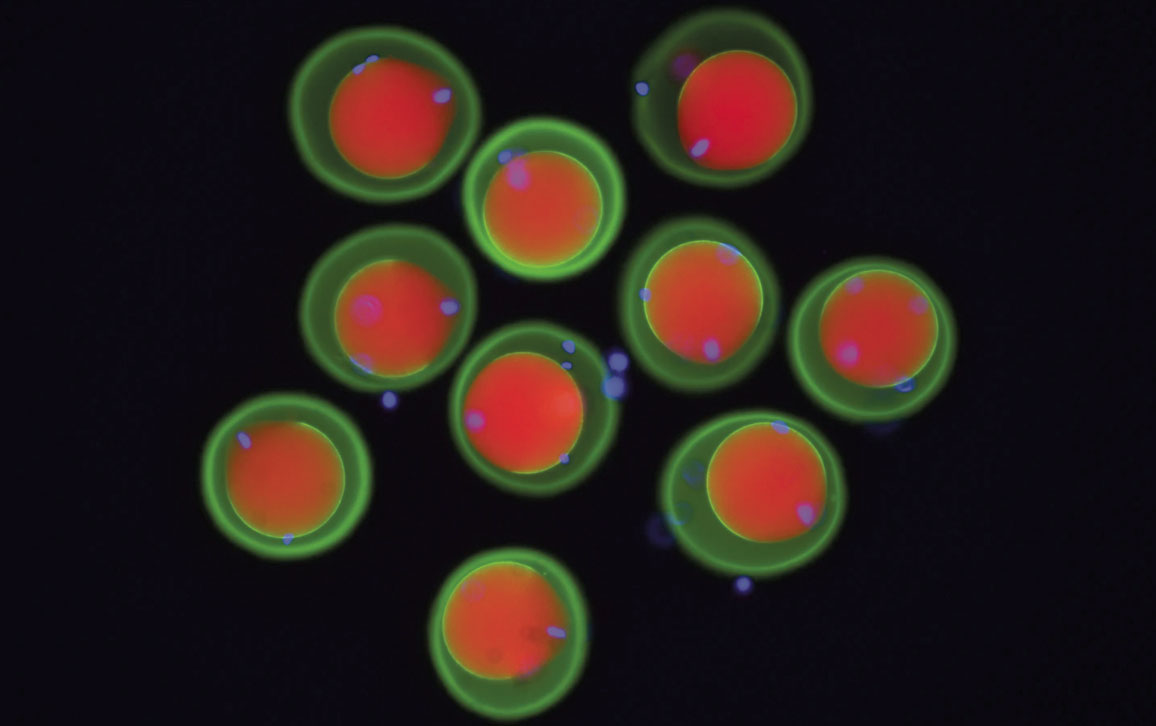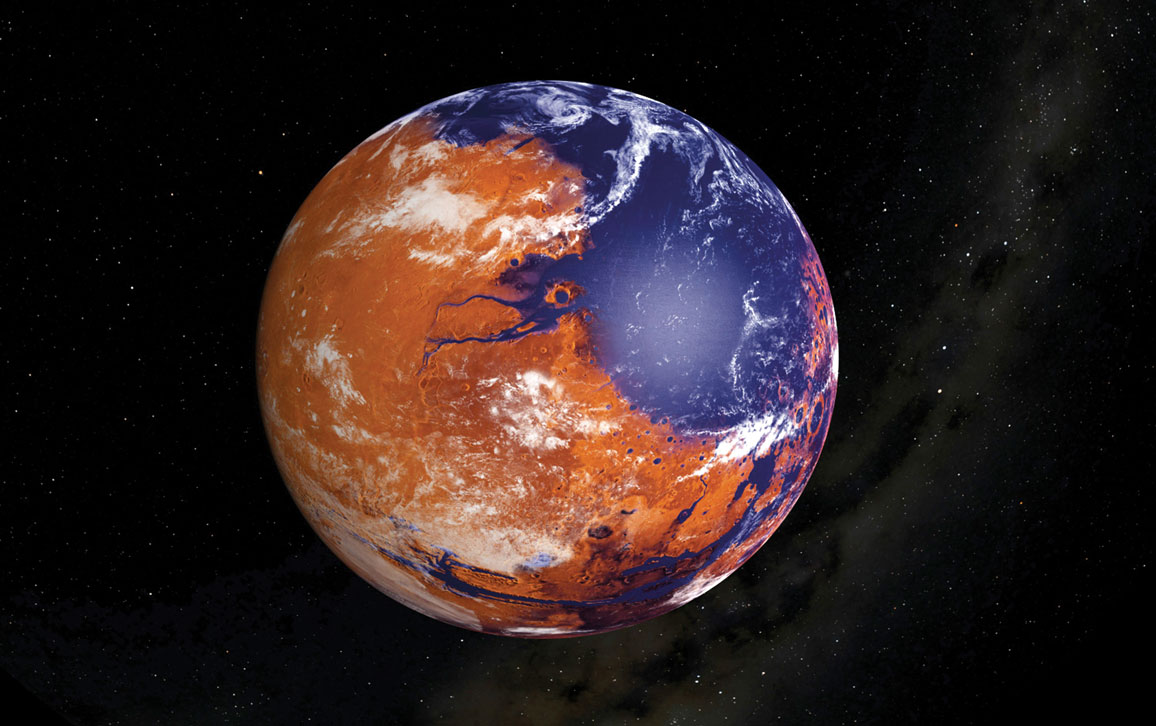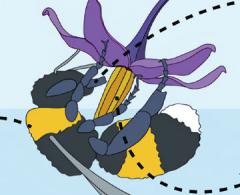
This Article From Issue
January-February 2025
Volume 113, Number 1
Page 10
In this roundup, associate editor Nicholas Gerbis summarizes notable recent developments in scientific research, selected from reports compiled in the free electronic newsletter Sigma Xi SmartBrief
When Ants Took Up Farming

Don Parsons
The cataclysm from the meteor that wiped out nonavian dinosaurs 66 million years ago bolstered the success of the first fungus-farming ants. So say evolutionary timelines derived from the largest genetic dataset of relevant species to date. A team led by researchers at the Smithsonian Institution’s National Museum of Natural History say that small, subsurface organisms nourished by plant detritus would have enjoyed a survival advantage amid the global environmental upheaval. Moreover, this shared food source would have brought ants into contact with fungi, providing more opportunities for domestication and symbiosis. The analysis of reliable genetic markers from hundreds of ants and fungi helped reconcile conflicting ideas about ant–fungi coevolution and about how current farming practices developed. Ants began farming fungus around the time of the Chicxulub meteor impact, but whether before or after is unknown. Ant and fungal evolutionary timelines closely align, which suggests that ant traits for farming and fungal traits that enabled cultivation developed around the same time.
Schultz, T. R., et. al. The coevolution of fungus-ant agriculture. Science 386:105–109 (October 3, 2024).
Undersea Nanocrystal Energy
Deep-sea hydrothermal vents can generate energy via channels of flowing ions, or charged atoms and molecules, according to a team led by scientists from the RIKEN Center for Sustainable Resource Science in Saitama, Japan. The findings show how a key capacity of living cells—a way to get energy from ions flowing across a membrane—can arise in nonliving systems, and hint at how life on Earth might have begun. Ions move along chemical and electrical gradients, creating flows that can be converted into energy via special nanoscale gatekeepers; in cells, protein complexes do the job. Researchers found that hydrothermal vents, too, create energy flows via ionic gradients and nanostructures. Specifically, they studied vents influenced by serpentinite from Earth’s mantle, a metamorphic rock that produces a highly alkaline fluid when exposed to heated seawater. The high-pH conditions strengthen the electrochemical gradient created by ions swirling in the fluid as it flows through hydrothermal vents. The vents’ walls contain layers of outward-pointing hydroxide crystals honeycombed with nanopores, which acquire different surface charges depending on which ions adhere to them. Thus, they play the same role as a cell’s protein complexes.
Lee, H.-E., et al. Osmotic energy conversion in serpentinite-hosted deep-sea hydrothermal vents. Nature Communications 15:8193 (September 24, 2024).
Sperm-Egg Bridge Found

Yonggang Lu/Osaka University/IMP via AP
Scientists have at last discovered how proteins in eggs and sperm recognize and bind to each other; their findings in both fish and mammals likely hold true for all vertebrates, including people. Until now, researchers knew that certain proteins are needed for fertilization, but not always why. Curiously, proteins needed by sperm for fertilization have remained mostly unchanged since mammals diverged from their fishlike ancestors, whereas their egg-protein counterparts are evolutionarily and structurally distinct from each other (possibly due to dissimilar challenges posed by external and internal fertilization). How could the same sperm proteins work for both? Using lab tests and a deep neural network to predict protein interactions, a team led by scientists at the Vienna BioCenter in Austria discovered a new sperm protein, Tmem81, that combines with two known sperm proteins to form a complex that can bind with both fish and mammal egg proteins, bridging the evolutionary gap. The same complex formed when researchers cultured the corresponding proteins in humans. The authors believe Tmem81 helps stabilize the sperm protein complex until fertilization.
Deneke, V. E., et al. A conserved fertilization complex bridges sperm and egg in vertebrates. Cell 187:1–13 (October 10, 2024).
Mars Likely Lifeless

NASA/Lunar and Planetary Institute
The most direct sampling and analysis ever of carbonates on Mars raises doubts that the Red Planet’s surface ever supported life, according to NASA researchers. Ratios of carbon and oxygen isotopes (versions of elements with different masses) released and measured by instruments aboard the Curiosity rover, which gathered the samples from four Gale crater sites, suggest no biosphere existed when the carbon–oxygen compounds formed three to four billion years ago. The isotope ratios also point to extreme rates of evaporation and of carbon flowing into the atmosphere—released from solution like bubbles from soda when a pressurized can is opened. Two ideas together best explain the high proportions of heavy carbon and oxygen isotopes: A geologically rapid vacillation between habitable wet and less-habitable dry climates, and frigid midlatitude regions where water, locked up in ice, was unavailable for biochemical uses. Such ideas are not new, but this marks the first time isotopic evidence from rock samples has been available to support them. The findings don’t rule out subsurface life or exclude the possibility that surface life existed before these carbonates formed.
Burtt, D. G., et al. Highly enriched carbon and oxygen isotopes in carbonate-derived CO2 at Gale crater, Mars. PNAS 121:e2321342121 (October 7, 2024).

American Scientist Comments and Discussion
To discuss our articles or comment on them, please share them and tag American Scientist on social media platforms. Here are links to our profiles on Twitter, Facebook, and LinkedIn.
If we re-share your post, we will moderate comments/discussion following our comments policy.